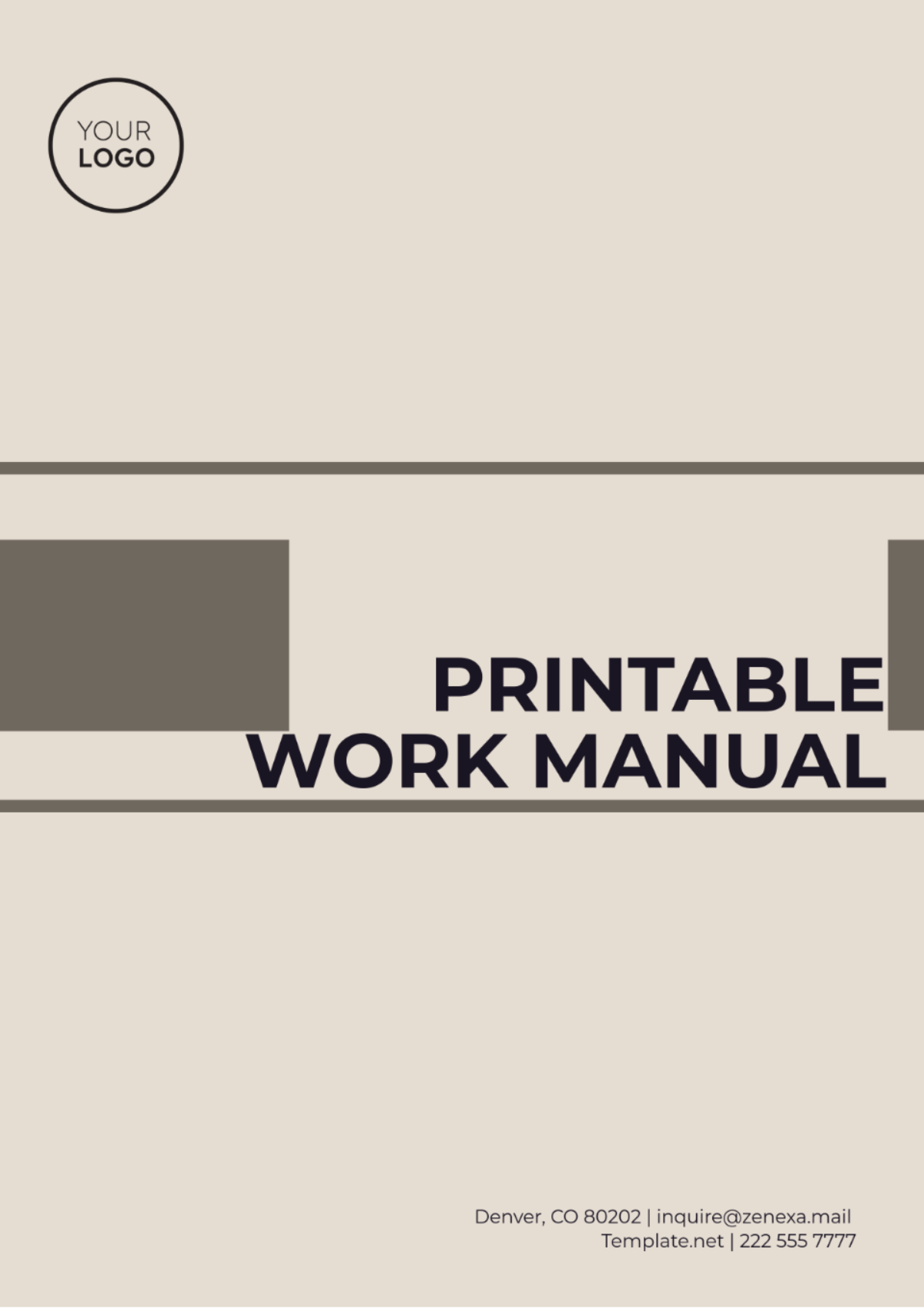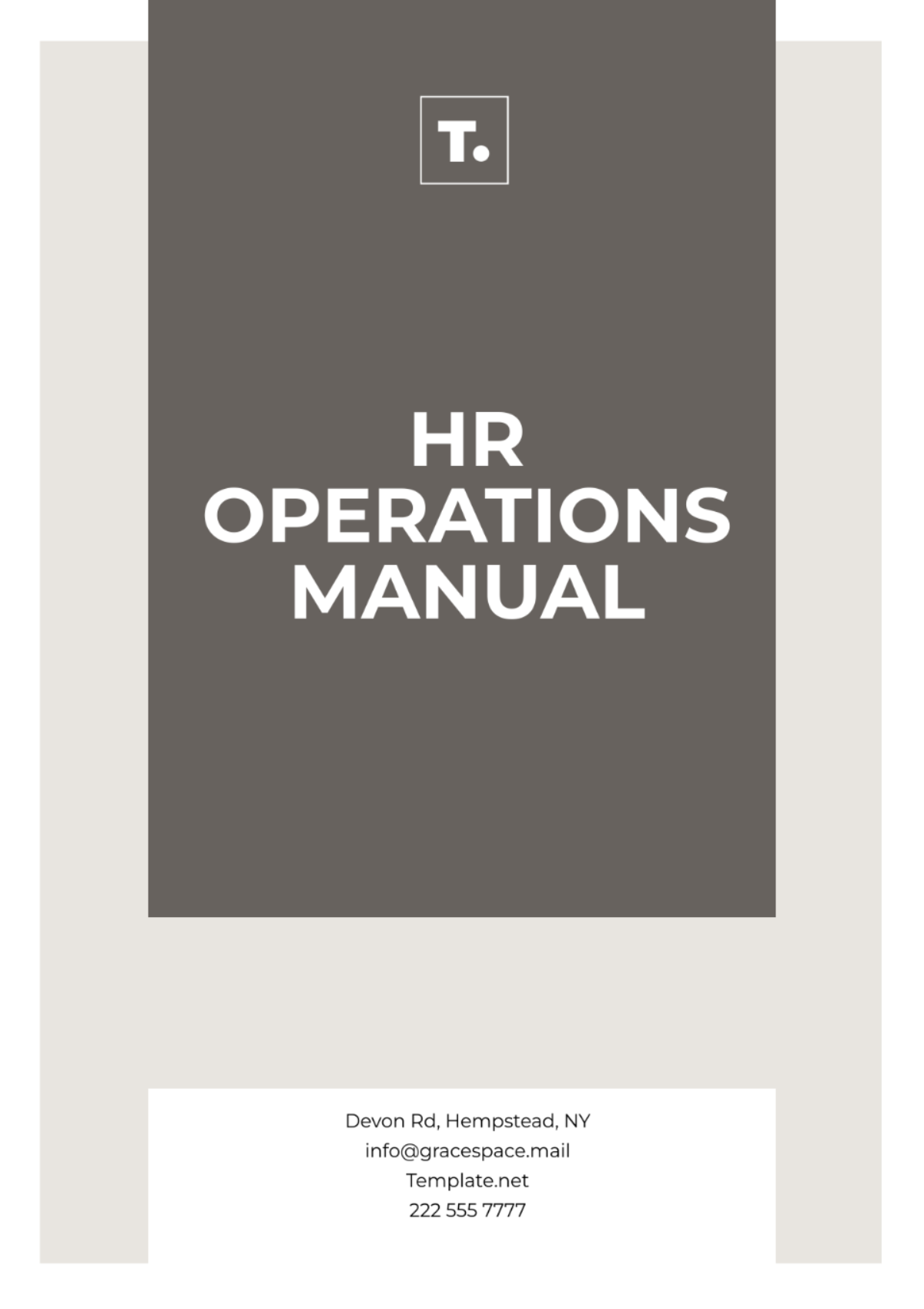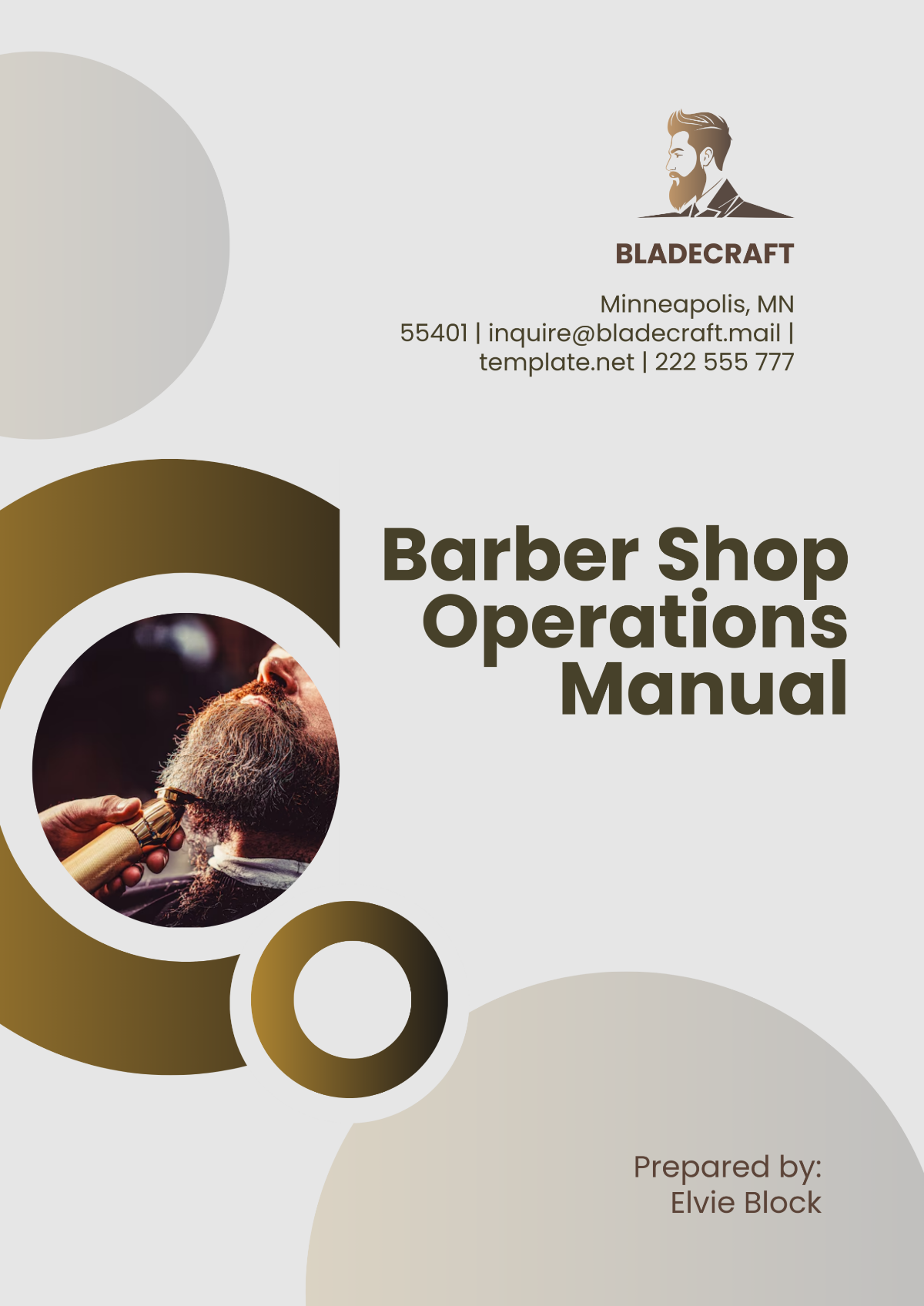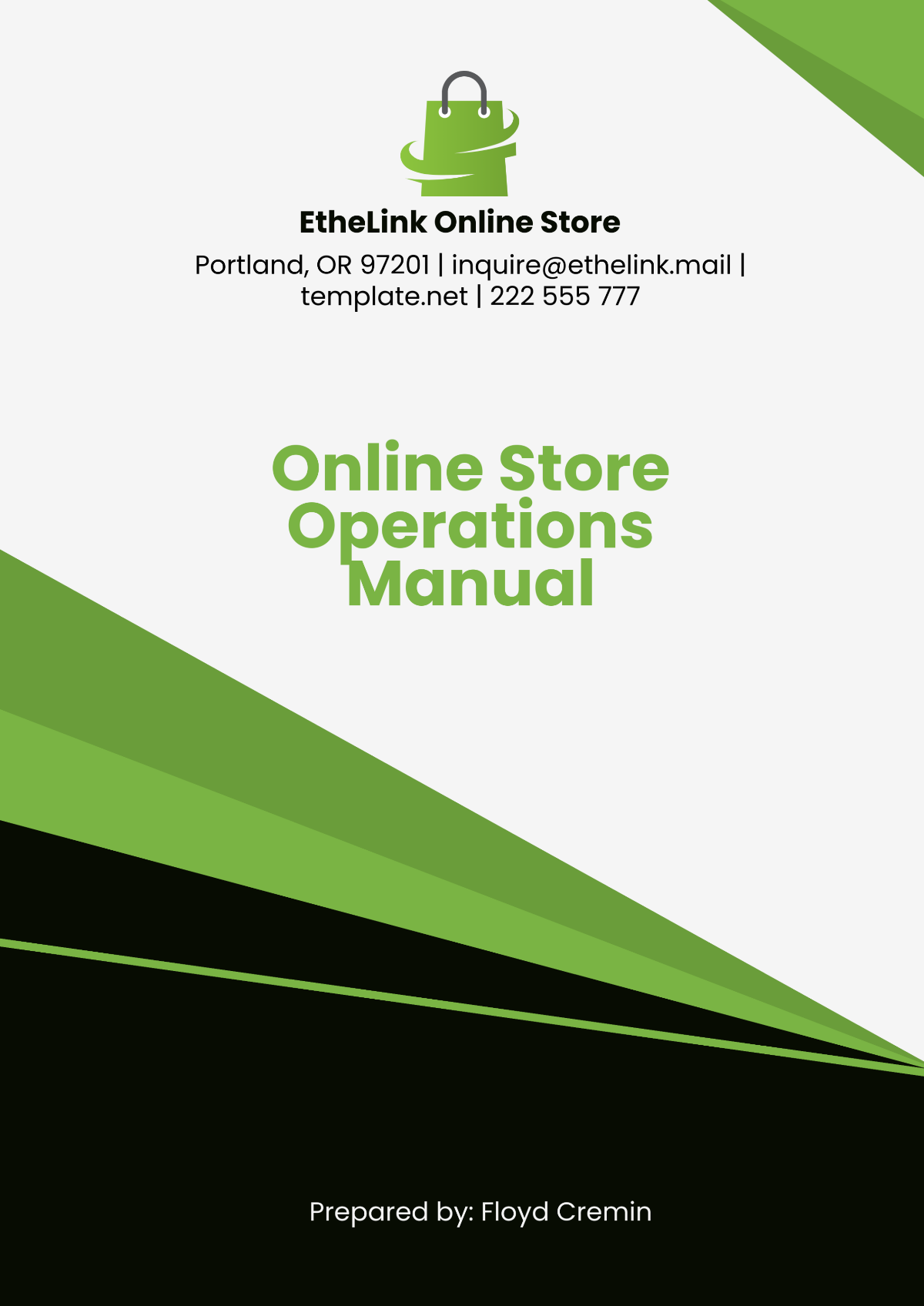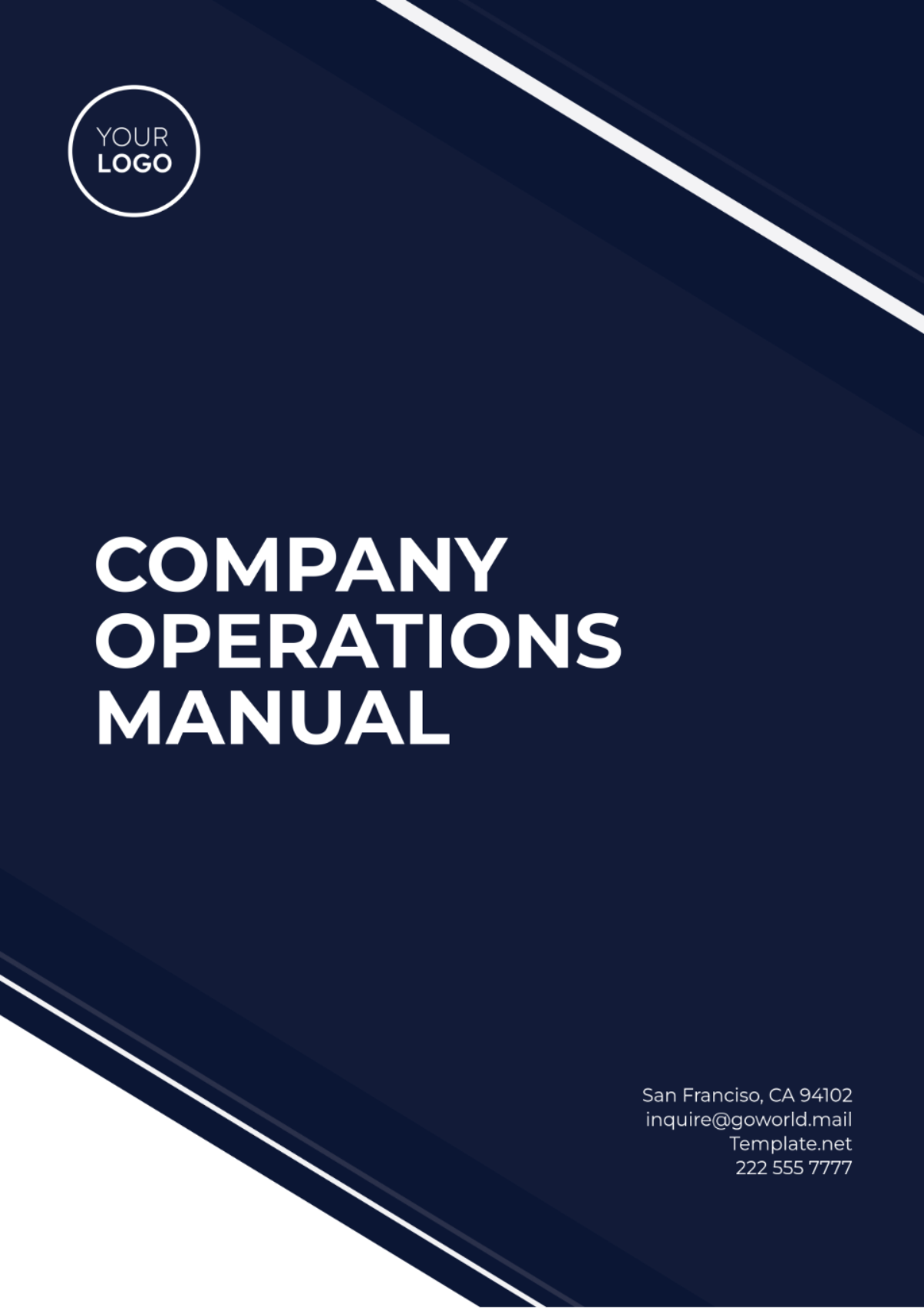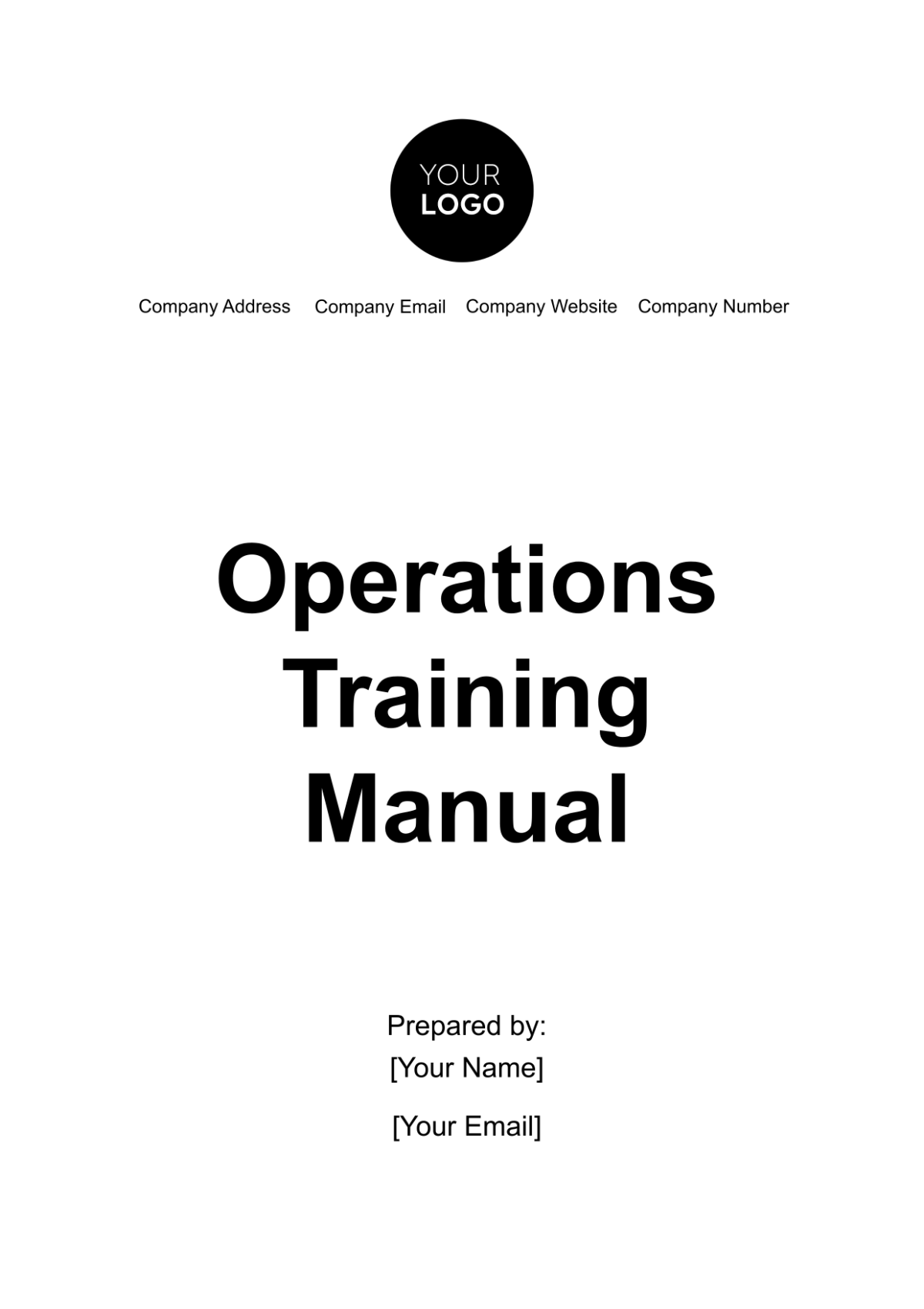Facility Operations Manual
Name | Company Name | Department | Date |
|---|---|---|---|
[YOUR NAME] | [YOUR COMPANY NAME] | [YOUR DEPARTMENT] | [CURRENT DATE] |
I. Introduction
Welcome to the [YOUR COMPANY NAME] Facility Operations Manual, designed to provide comprehensive guidance for the efficient management and operation of our facility. This manual serves as a valuable resource for [YOUR DEPARTMENT] staff, outlining essential procedures, protocols, and best practices to ensure the safety, functionality, and upkeep of the facility.
A. Purpose
The purpose of this manual is to:
Establish standardized operating procedures (SOPs) for facility management and maintenance.
Ensure compliance with regulatory requirements and safety standards.
Facilitate effective training and onboarding of staff.
Enhance emergency preparedness and response protocols.
B. Scope
This manual applies to all [YOUR COMPANY NAME] employees involved in facility operations, including facility managers, maintenance staff, security personnel, and administrative staff. It encompasses various aspects of facility management, including but not limited to maintenance, safety, security, and emergency preparedness.
II. Facility Overview
The [YOUR COMPANY NAME] facility is located at [FACILITY ADDRESS] and spans [SQUARE FOOTAGE/AREA] of space. It serves as the primary hub for [BRIEF DESCRIPTION OF FACILITY OPERATIONS]. The facility consists of [NUMBER OF FLOORS/LEVELS], including [LIST OF MAJOR AREAS/SECTIONS].
A. Key Features
[BRIEF DESCRIPTION OF KEY FEATURES/INFRASTRUCTURE]
[LIST OF AMENITIES/SERVICES AVAILABLE]
B. Emergency Contacts
In case of emergency, contact:
Emergency Services: [EMERGENCY PHONE NUMBER]
Facility Manager: [FACILITY MANAGER'S NAME] - [FACILITY MANAGER'S PHONE NUMBER]
Security: [SECURITY OFFICE/PERSONNEL NAME] - [SECURITY PHONE NUMBER]
III. Operational Procedures
A. Maintenance
[YOUR COMPANY NAME] prioritizes the upkeep and maintenance of our facility to ensure optimal functionality and safety for all occupants. Maintenance procedures outlined in this section cover routine inspections, repairs, and preventive maintenance tasks.
Routine Inspections
Conduct weekly inspections of [LIST OF AREAS/EQUIPMENT] to identify and address any maintenance issues promptly.
Document findings and maintenance actions using the provided inspection checklist.
Repairs and Maintenance Requests
Employees should promptly report any maintenance issues or equipment malfunctions to the Facility Manager using the designated maintenance request form.
The Facility Manager will assess the request and coordinate with maintenance staff or external vendors for repairs as necessary.
B. Safety
Safety is a top priority at [YOUR COMPANY NAME], and all employees are responsible for maintaining a safe work environment. This section outlines safety procedures, protocols, and guidelines to prevent accidents and injuries.
Emergency Evacuation Procedures
Familiarize yourself with the emergency evacuation routes posted throughout the facility.
In the event of a fire or other emergency requiring evacuation, follow the designated evacuation route to the assembly point located [LOCATION OF ASSEMBLY POINT].
Hazardous Materials Handling
Properly label and store hazardous materials in designated storage areas.
Follow established protocols for handling, disposing of, and cleaning up spills of hazardous substances.
IV. Security Procedures
Maintaining a secure environment is essential for the safety and protection of our facility, employees, and assets. This section outlines security procedures and protocols to mitigate risks and prevent unauthorized access.
A. Access Control
Key/Card Access
Access to the facility is granted via keycards issued to authorized personnel only.
Employees must not share their keycards and report any lost or stolen cards immediately to Security.
Visitor Management
All visitors must sign in at the reception desk and wear visitor badges while on-site.
Escort visitors to their destination and ensure they are accompanied at all times.
B. Surveillance
CCTV Monitoring
Surveillance cameras are strategically positioned throughout the facility to monitor activity and enhance security.
Security personnel are responsible for monitoring CCTV feeds and identifying any suspicious behavior or security breaches.
Incident Reporting
Employees should report any security incidents, such as unauthorized access attempts or suspicious activities, to Security immediately.
Provide detailed information, including date, time, location, and description of the incident.
V. Emergency Preparedness
In the event of an emergency, preparedness and swift response are crucial for ensuring the safety and well-being of everyone in the facility. This section outlines emergency procedures and protocols to be followed in various scenarios.
A. Fire Safety
Fire Alarm Procedures
Upon hearing the fire alarm, evacuate the building immediately using the nearest exit route.
Do not use elevators during a fire evacuation. Use stairwells instead.
Fire Extinguisher Use
Familiarize yourself with the location of fire extinguishers throughout the facility.
Only attempt to use a fire extinguisher if trained to do so and if the fire is small and contained.
B. Medical Emergencies
First Aid Kit Locations
First aid kits are located [PROVIDE LOCATIONS] for quick access in case of medical emergencies.
Designated first aiders are trained to provide basic medical assistance until professional help arrives.
Emergency Medical Services (EMS)
In case of a medical emergency requiring immediate attention, call Emergency Services at [EMERGENCY PHONE NUMBER] and provide details of the situation.
VI. Additional Resources
A. Contact Information
Facility Management
Facility Manager: [FACILITY MANAGER'S NAME] - [FACILITY MANAGER'S PHONE NUMBER]
Assistant Facility Manager: [ASSISTANT FACILITY MANAGER'S NAME] - [ASSISTANT FACILITY MANAGER'S PHONE NUMBER]
Security
Security Office: [SECURITY OFFICE/PERSONNEL NAME] - [SECURITY PHONE NUMBER]
Security Supervisor: [SECURITY SUPERVISOR'S NAME] - [SECURITY SUPERVISOR'S PHONE NUMBER]
B. References
Regulations and Standards
Familiarize yourself with applicable regulations and standards governing facility operations, including [LIST REGULATIONS/STANDARDS].
Training Materials
Access training materials and resources to enhance your knowledge and skills in facility management and safety procedures.
VII. Maintenance of Records
Maintaining accurate records is essential for effective facility management and regulatory compliance. This section outlines the procedures for record-keeping and documentation of various activities within the facility.
A. Maintenance Logs
Equipment Maintenance Log
Document all maintenance activities performed on facility equipment, including repairs, inspections, and preventive maintenance measures.
Include details such as date, description of work performed, personnel involved, and any follow-up actions required.
Facility Inspection Reports
Conduct regular inspections of the facility to assess its condition and identify any maintenance or safety concerns.
Record inspection findings, observations, and recommendations for corrective action in the inspection report.
B. Incident Reports
Security Incidents
Document any security incidents, breaches, or suspicious activities observed or reported within the facility.
Include details such as date, time, location, description of the incident, and actions taken by security personnel.
Medical Emergencies
Record details of any medical emergencies occurring within the facility, including the nature of the emergency, individuals involved, and medical assistance provided.
VIII. Training and Development
Continuous training and development are essential for maintaining a skilled and knowledgeable workforce capable of effectively managing facility operations. This section outlines training programs and resources available to employees.
A. Orientation and Onboarding
Facility Orientation
All new employees will undergo a comprehensive facility orientation to familiarize themselves with facility layout, safety procedures, and emergency protocols.
Orientation sessions will be conducted by Facility Management or designated trainers.
On-the-Job Training
Provide on-the-job training to employees on specific tasks and procedures relevant to their roles within the facility.
Assign experienced personnel as mentors to assist new hires in acclimating to their roles and responsibilities.
B. Ongoing Training Programs
Safety Training
Regular safety training sessions will be conducted to reinforce safety protocols and procedures.
Topics covered may include fire safety, hazardous materials handling, and emergency response procedures.
Skills Development
Offer skills development workshops and courses to enhance employees' technical skills and knowledge in areas such as maintenance, security, and emergency preparedness.
IX. Conclusion
We appreciate your commitment to maintaining the highest standards of facility management and operations at [YOUR COMPANY NAME]. This Facility Operations Manual serves as a valuable resource for all employees involved in the management, maintenance, and operation of our facility. By adhering to the guidelines and procedures outlined herein, we can ensure the safety, functionality, and efficiency of our facility for the benefit of all stakeholders.
Should you have any questions, feedback, or suggestions regarding this manual, please don't hesitate to reach out to the Facility Manager or [YOUR NAME] in [YOUR DEPARTMENT]. Your input is invaluable in helping us continuously improve and refine our operational practices.



